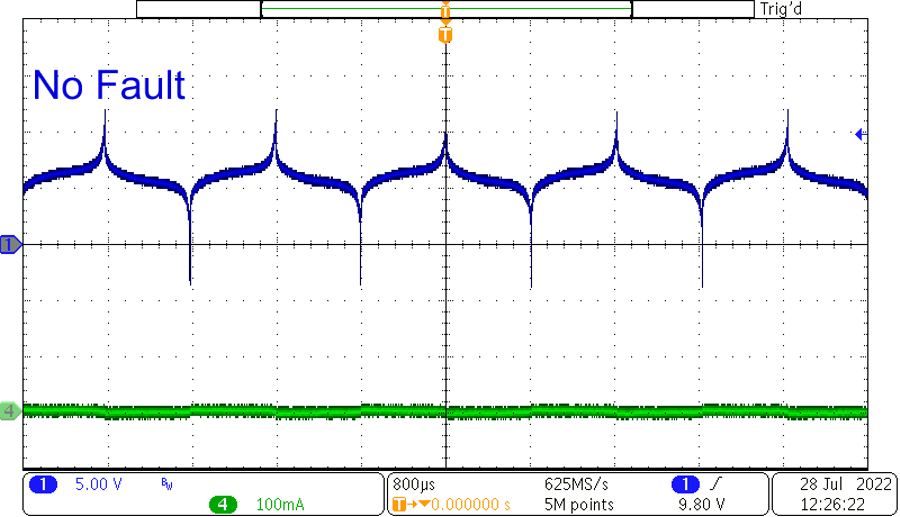TIDUF04 December 2022
- Description
- Resources
- Features
- Applications
- 5
- 1System Description
-
2System Overview
- 2.1 Block Diagram
- 2.2
Design Considerations
- 2.2.1
Isolated AC/DC Power Supply Design
- 2.2.1.1 Input Bulk Capacitance and Minimum Bulk Voltage
- 2.2.1.2 Transformer Turns-Ratio, Primary Inductance, and Primary Peak Current
- 2.2.1.3 Transformer Parameter Calculations: Primary and Secondary RMS Currents
- 2.2.1.4 Main Switching Power MOSFET Selection
- 2.2.1.5 Rectifying Diode Selection
- 2.2.1.6 Output Capacitor Selection
- 2.2.1.7 Capacitance on VDD Pin
- 2.2.1.8 Open-loop Voltage Regulation Versus Pin Resistor Divider, Line Compensation Resistor
- 2.2.1.9 Feedback Elements
- 2.2.1.10 Backup Power Supply
- 2.2.1.11 Supercapacitor Selection
- 2.2.1.12 Supercapacitor Charger Design
- 2.2.2 Control Pilot Signal Interface
- 2.2.3 Relay Drive and Weld Detect
- 2.2.4 Residual Current Detection
- 2.2.1
Isolated AC/DC Power Supply Design
- 2.3 Highlighted Products
- 3Hardware, Testing Requirements, and Test Results
- 4Design and Documentation Support
- 5About the Author
2.2.4.3 Saturation Detection Circuit
The saturation detection circuit is made of the low-side current sense resistor (R7), current sense amplifier INA293, and comparator TLV7011. The comparator outputs high when the fluxgate sensor coil saturation is reached. The circuit shown in Figure 2-8 is used to determine when the fluxgate sensor has reached saturation.
 Figure 2-8 Saturation
Detection Schematic
Figure 2-8 Saturation
Detection SchematicVSENSE is read from the low-side shunt resistor of the DRV8220. VSENSE gives the current through the fluxgate sensor coil. This signal is gained up by current sense amplifier INA293, with a fixed gain of 20 V/V. The gained signal is compared to a reference voltage VREF of 500 mV, which is sourced from a resistor divider. When the current sense signal passes the VREF voltage, the core has saturated and the DRV8220 must switch the output directions. The output of comparator TLV7011 feeds into a DFF which is explained more in the H-Bridge Controlled by DFF section.

Figure 2-9 Burden Resistor Going Into Saturation